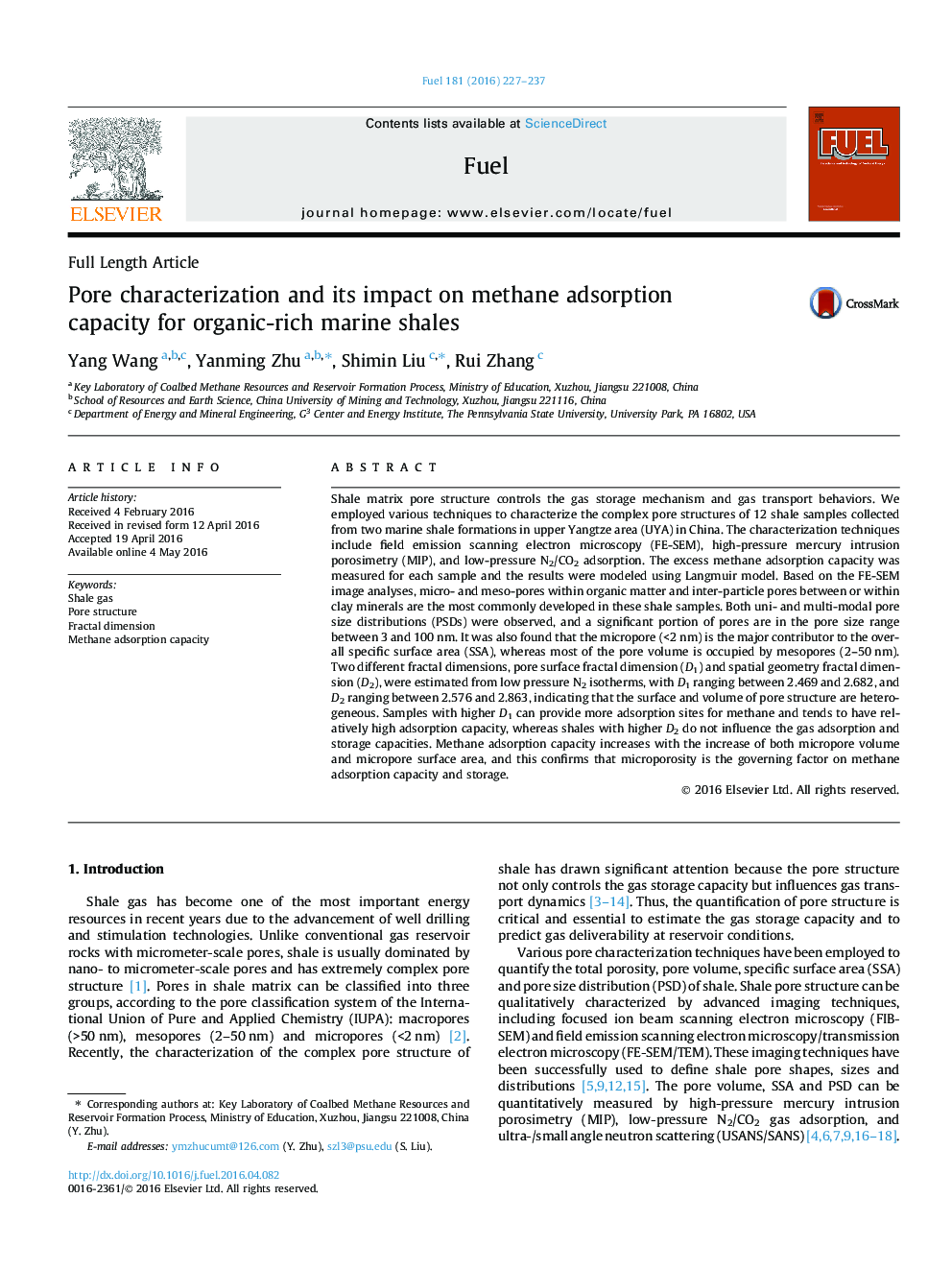| کد مقاله | کد نشریه | سال انتشار | مقاله انگلیسی | نسخه تمام متن |
|---|---|---|---|---|
| 204912 | 461093 | 2016 | 11 صفحه PDF | دانلود رایگان |
Shale matrix pore structure controls the gas storage mechanism and gas transport behaviors. We employed various techniques to characterize the complex pore structures of 12 shale samples collected from two marine shale formations in upper Yangtze area (UYA) in China. The characterization techniques include field emission scanning electron microscopy (FE-SEM), high-pressure mercury intrusion porosimetry (MIP), and low-pressure N2/CO2 adsorption. The excess methane adsorption capacity was measured for each sample and the results were modeled using Langmuir model. Based on the FE-SEM image analyses, micro- and meso-pores within organic matter and inter-particle pores between or within clay minerals are the most commonly developed in these shale samples. Both uni- and multi-modal pore size distributions (PSDs) were observed, and a significant portion of pores are in the pore size range between 3 and 100 nm. It was also found that the micropore (<2 nm) is the major contributor to the overall specific surface area (SSA), whereas most of the pore volume is occupied by mesopores (2–50 nm). Two different fractal dimensions, pore surface fractal dimension (D1) and spatial geometry fractal dimension (D2), were estimated from low pressure N2 isotherms, with D1 ranging between 2.469 and 2.682, and D2 ranging between 2.576 and 2.863, indicating that the surface and volume of pore structure are heterogeneous. Samples with higher D1 can provide more adsorption sites for methane and tends to have relatively high adsorption capacity, whereas shales with higher D2 do not influence the gas adsorption and storage capacities. Methane adsorption capacity increases with the increase of both micropore volume and micropore surface area, and this confirms that microporosity is the governing factor on methane adsorption capacity and storage.
Journal: Fuel - Volume 181, 1 October 2016, Pages 227–237
